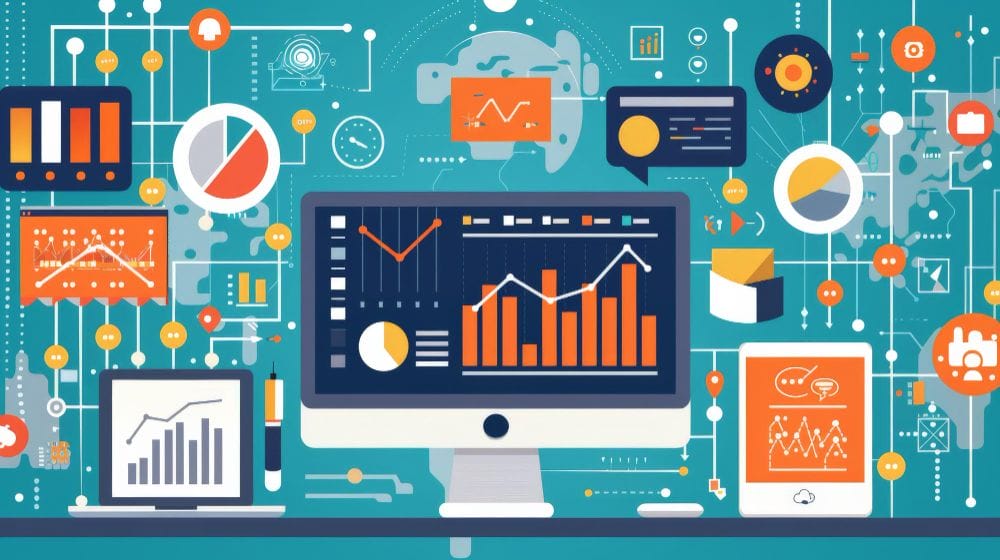Understanding economic indicators is akin to possessing a crystal ball for traders and investors. Among the most crucial indicators is the Japan Leading Economic Index (LEI). This detailed article will delve into what this index is, why it matters, and how you can leverage it to your advantage. We’ll keep the explanations straightforward, engaging, and peppered with analogies to demystify this complex topic.
What is the Japan Leading Economic Index?
The Japan Leading Economic Index (LEI) is a composite index designed to predict the future direction of the economy. Think of it as a weather forecast but for economic conditions. Compiled monthly, it aggregates various economic indicators that have historically been leading indicators of economic performance. These indicators range from stock prices to consumer confidence, providing a broad view of the economic landscape.

The LEI’s primary function is to signal economic turning points. Whether the economy is on the cusp of expansion or contraction, the LEI provides an early indication. For investors and traders, this foresight is invaluable, offering a head start on making strategic decisions.
Why Should You Care About the Japan Leading Economic Index?
So, why should you, as a trader or investor, pay attention to the LEI? Imagine trying to navigate a ship through a storm without any navigational tools. That’s what it’s like trading without considering economic indicators. The LEI helps you steer through the economic landscape by giving you a glimpse of where the economy is headed. It allows you to make informed decisions, whether you’re buying, selling, or holding assets.
Components of the Japan Leading Economic Index
1. Industrial Production
Industrial production measures the output of the nation’s factories, mines, and utilities. It’s a significant component because it reflects the overall industrial health of Japan, a country heavily reliant on manufacturing. When industrial production is up, it indicates robust economic activity and growth potential.
2. New Orders for Machinery
Think of new orders for machinery as the economy’s shopping list. When businesses order more machinery, it’s a sign they expect growth. A surge in machinery orders usually precedes an uptick in production and employment. It’s like buying new equipment for a kitchen, anticipating an increase in restaurant customers.
3. Stock Prices
Stock market prices are akin to the heartbeat of the economy. Rising stock prices generally indicate investor confidence in future growth, while falling prices suggest the opposite. Stock prices can be volatile, but over time, they reflect broader economic trends and investor sentiment.
4. Consumer Confidence
Consumer confidence is a psychological measure but crucial nonetheless. If people feel good about their financial situation, they spend more, boosting the economy. If they’re worried, they tighten their belts. Consumer confidence surveys gauge how optimistic or pessimistic consumers are about the economy’s prospects.
5. Building Permits
Building permits are a precursor to construction activity. An increase in building permits signals future construction activity, which in turn stimulates economic growth. It’s like planting seeds with the expectation of a bountiful harvest later.
6. Interest Rates Spread
The interest rates spread, particularly the difference between long-term and short-term interest rates, is a key indicator. A widening spread typically signals economic expansion, while a narrowing spread can indicate an impending recession. It’s like the distance between two runners in a race; the gap can tell you a lot about who’s gaining ground.
7. Business Inventories
Business inventories reflect the stock of goods that businesses have on hand. Rising inventories can indicate either that businesses are optimistic about future sales or that sales are lagging behind expectations. It’s like a pantry; too much food might mean you’re preparing for a feast or that you’re not eating as much as expected.
How is the LEI Calculated?
Calculating the LEI involves combining various economic data points into a single index number. Each component is standardized and weighted based on its historical importance. The result is a single number that provides a snapshot of future economic activity. This composite approach ensures that the LEI reflects a balanced view of the economy, considering multiple facets rather than relying on a single metric.
The Significance of the LEI in Market Analysis
1. Predicting Economic Turning Points
The LEI is like an early warning system. It often signals turning points in the economy before they happen, giving you a head start on making strategic decisions. For instance, if the LEI starts to decline consistently, it might indicate an upcoming recession, prompting you to adopt a more defensive investment strategy.
2. Influencing Investment Strategies
Savvy investors use the LEI to time their investments. When the index signals growth, it might be time to go long, investing in stocks and other growth-oriented assets. Conversely, if the index signals a downturn, it could be time to play it safe or even go short, investing in defensive assets or hedging against market declines.
3. Impact on Forex Trading
For forex traders, the LEI is invaluable. It helps predict currency strength. For instance, if Japan’s LEI is strong, the yen might appreciate against other currencies, presenting trading opportunities. A trader might go long on the yen against weaker currencies, capitalizing on the expected economic growth indicated by the LEI.
Historical Performance of the Japan Leading Economic Index
Looking at the LEI’s historical performance, you’ll notice it has been a reliable indicator of economic trends. Major economic downturns and upswings have often been preceded by significant movements in the LEI. For example, the LEI started to signal trouble months before the 2008 financial crisis, highlighting its value as an early warning system.
Case Study: LEI and the 2008 Financial Crisis
The 2008 financial crisis was a significant economic downturn that shook global markets. Interestingly, the LEI had started to signal trouble months before the crash. The LEI’s components, such as stock prices and consumer confidence, began to show signs of weakness, indicating an impending economic slowdown. This early warning allowed astute investors to take protective measures before the full impact of the crisis hit.
Interpreting the LEI Data
1. Rising LEI
A rising LEI suggests that the economy is poised for growth. Investors might see this as a green light to take on more risk. For instance, if the LEI has been climbing steadily, it could be a signal to invest in growth stocks or expand business operations.
2. Falling LEI
A falling LEI is a red flag. It indicates that economic activity might slow down, and it could be time to adopt a more conservative investment strategy. This might involve shifting investments to safer assets like bonds or reducing exposure to high-risk sectors.
3. Steady LEI
If the LEI is steady, it suggests stability. Investors can expect the current economic trends to continue without significant change. This might be a time to maintain current investment positions and avoid making drastic changes based on market speculation.
Using the LEI in Your Trading Strategy
1. Combine with Other Indicators
While the LEI is powerful, it’s not foolproof. Combine it with other indicators like GDP growth, employment data, and inflation rates to get a fuller picture. This multi-faceted approach ensures that you consider various aspects of the economy rather than relying on a single index.
2. Stay Updated
Economic conditions change rapidly. Keep an eye on the latest LEI reports to stay ahead of the curve. Subscribe to economic newsletters, follow financial news, and use real-time data sources to ensure you have the most current information.
3. Adapt Your Strategy
Be flexible. Use the LEI to adapt your strategy to current economic conditions, whether it’s going long, short, or staying neutral. For example, if the LEI signals a downturn, you might reduce your exposure to cyclical stocks and increase investments in defensive sectors like utilities and consumer staples.
The Role of the LEI in Economic Policy
Governments and central banks also pay close attention to the LEI. It helps them make decisions about monetary policy, such as interest rate adjustments and economic stimulus measures. For instance, if the LEI indicates a slowing economy, central banks might lower interest rates to stimulate growth.
Monetary Policy Adjustments
Central banks use the LEI to gauge the economy’s health and make necessary adjustments. For instance, if the LEI signals economic weakness, the central bank might implement policies to inject liquidity into the economy, such as lowering interest rates or buying government bonds.
Fiscal Policy Decisions
Governments might also use the LEI to guide fiscal policy. If the LEI suggests an impending recession, the government might increase spending on infrastructure projects to stimulate economic activity and create jobs.
Challenges and Limitations of the LEI
1. Data Revisions
Economic data can be revised, which might affect the LEI. Always consider this when making decisions based on the LEI. For instance, initial data releases might be optimistic, but subsequent revisions could paint a less rosy picture, impacting the LEI’s reliability.
2. Lagging Indicators
The LEI, while predictive, is based on historical data. It might not always capture the latest economic shifts. Rapid changes in technology, geopolitical events, or natural disasters can significantly impact the economy in ways that the LEI might not immediately reflect.
3. Overreliance
Relying solely on the LEI can be risky. Always use it in conjunction with other data and analysis. A comprehensive approach ensures that you account for various factors influencing the economy and avoid making decisions based on a single indicator.
The Future of the Japan Leading Economic Index
As technology advances, the accuracy and timeliness of economic indicators like the LEI are expected to improve. This will make them even more valuable tools for traders and investors. For example, integrating real-time data analytics and machine learning can enhance the LEI’s predictive power, providing more accurate and timely economic forecasts.
Technological Integration
Future iterations of the LEI might incorporate advanced technologies like artificial intelligence and big data analytics. These technologies can process vast amounts of data in real time, improving the LEI’s accuracy and timeliness. This integration can help capture rapid economic shifts more effectively, providing even earlier warnings of economic turning points.
Global Economic Integration
As the global economy becomes more interconnected, the LEI might also incorporate international data. This global perspective can provide a more comprehensive view of economic trends, considering the impact of global events on Japan’s economy. For instance, supply chain disruptions in one part of the world can significantly impact Japan’s industrial production, which the LEI can better capture with a more global focus.
Conclusion
The Japan Leading Economic Index is an indispensable tool for anyone serious about market analysis. By understanding and interpreting this index, you can gain vital insights into future economic trends and make informed trading decisions. Remember, it’s not just about the data but how you use it. Stay informed, stay flexible, and use the LEI as part of a broader strategy to navigate the complex world of market trading.
FAQs
1. What makes the Japan Leading Economic Index reliable?
The LEI combines multiple economic indicators, each proven to predict future activity, offering a balanced economic view.
2. How often is the LEI updated?
The LEI is updated monthly, ensuring it reflects the latest economic data and trends for timely decision-making.
3. Can the LEI predict stock market movements?
While not foolproof, the LEI often signals broader economic trends that impact stock market movements, aiding investors.
4. Is the LEI useful for long-term investments?
Yes, it helps identify long-term economic trends, guiding strategic investment decisions for sustained growth and stability.
5. How can I access the Japan Leading Economic Index?
The LEI is available through financial news outlets, economic research institutions, and economic databases, including central bank reports.









